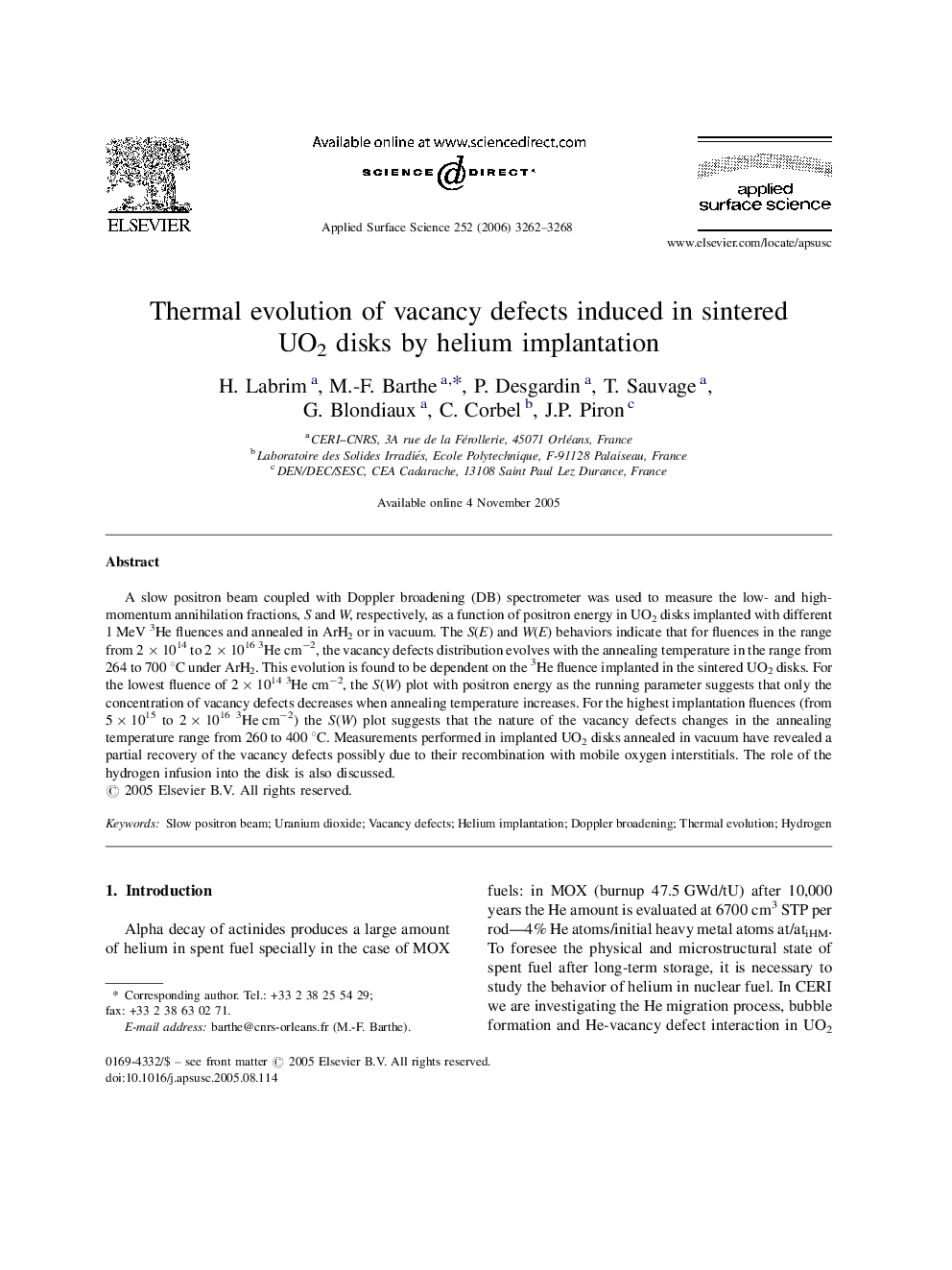| کد مقاله | کد نشریه | سال انتشار | مقاله انگلیسی | نسخه تمام متن |
|---|---|---|---|---|
| 5366949 | 1388358 | 2006 | 7 صفحه PDF | دانلود رایگان |

A slow positron beam coupled with Doppler broadening (DB) spectrometer was used to measure the low- and high-momentum annihilation fractions, S and W, respectively, as a function of positron energy in UO2 disks implanted with different 1 MeV 3He fluences and annealed in ArH2 or in vacuum. The S(E) and W(E) behaviors indicate that for fluences in the range from 2 Ã 1014 to 2 Ã 10163He cmâ2, the vacancy defects distribution evolves with the annealing temperature in the range from 264 to 700 °C under ArH2. This evolution is found to be dependent on the 3He fluence implanted in the sintered UO2 disks. For the lowest fluence of 2 Ã 10143He cmâ2, the S(W) plot with positron energy as the running parameter suggests that only the concentration of vacancy defects decreases when annealing temperature increases. For the highest implantation fluences (from 5 Ã 1015 to 2 Ã 10163He cmâ2) the S(W) plot suggests that the nature of the vacancy defects changes in the annealing temperature range from 260 to 400 °C. Measurements performed in implanted UO2 disks annealed in vacuum have revealed a partial recovery of the vacancy defects possibly due to their recombination with mobile oxygen interstitials. The role of the hydrogen infusion into the disk is also discussed.
Journal: Applied Surface Science - Volume 252, Issue 9, 28 February 2006, Pages 3262-3268